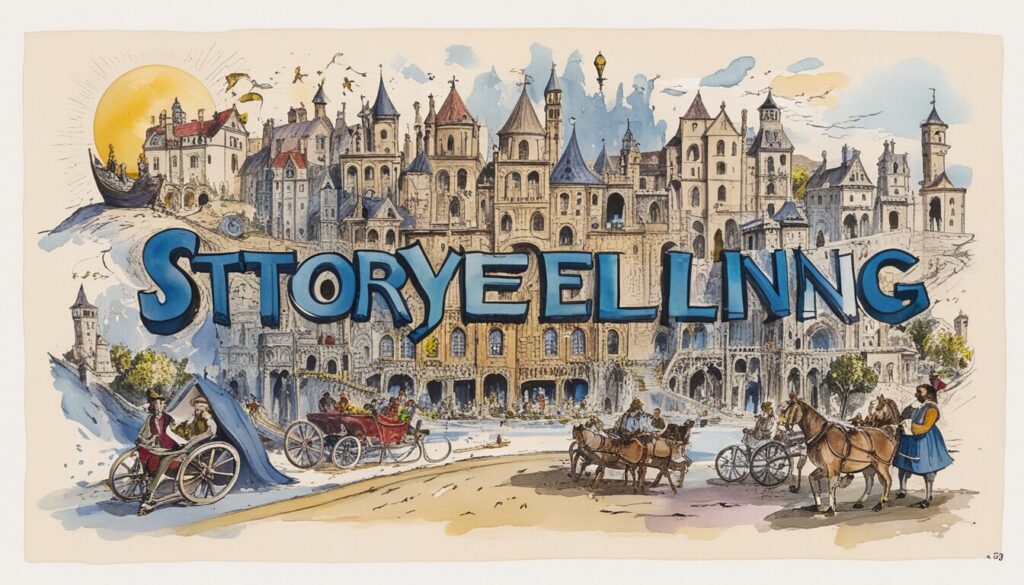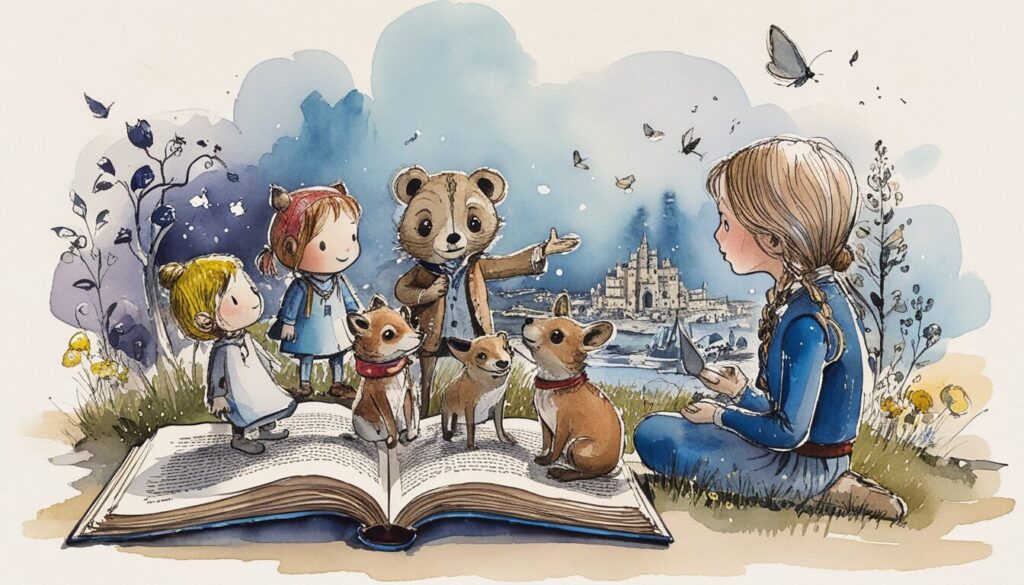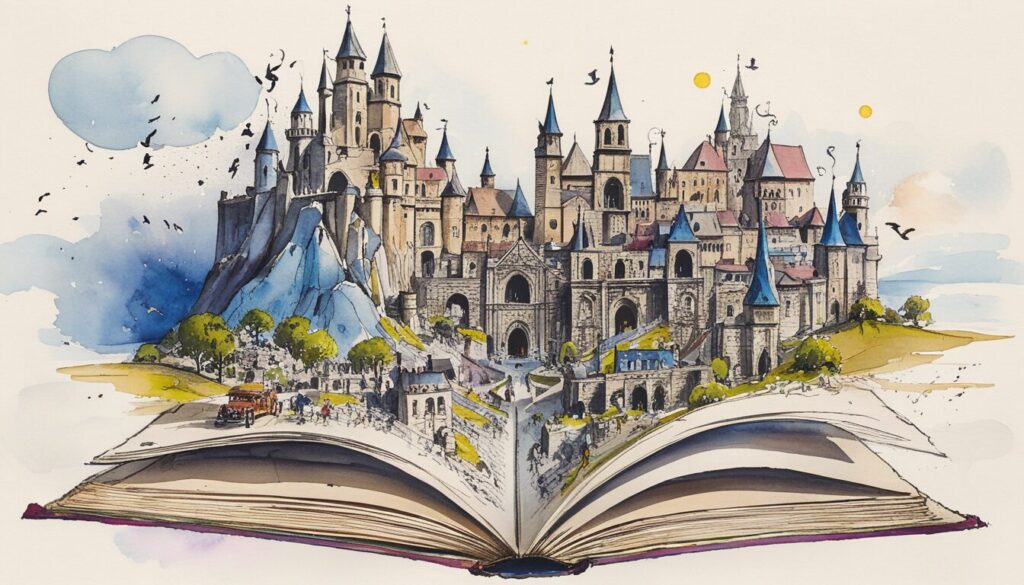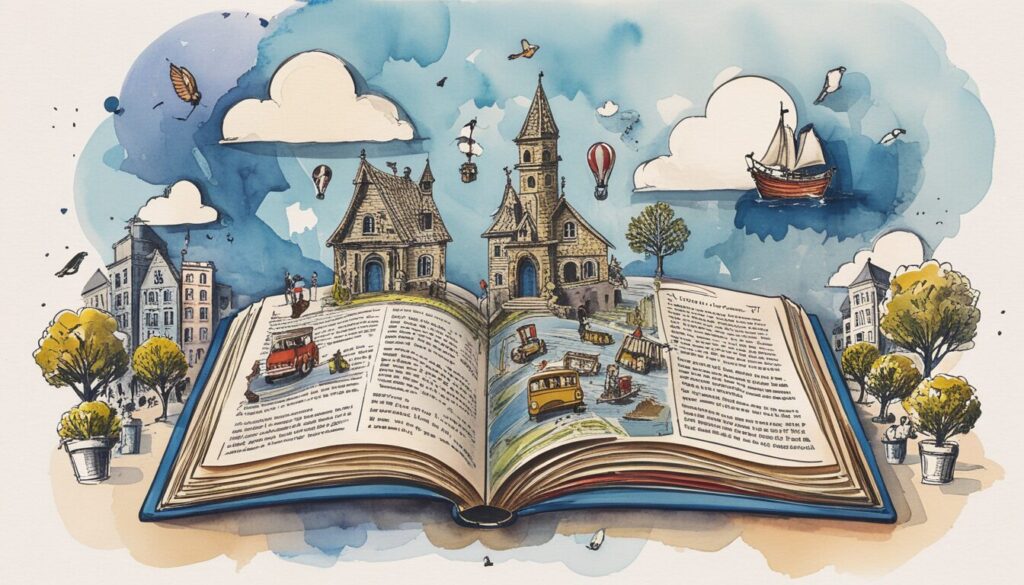The art of storytelling is as ancient as language itself, a thread that has woven its way through time, culture, and imagination. In fact, according to a famous Irish proverb: “Telling a story is the shortest path between two people.” Whether it’s a tale told around the flickering light of a campfire, a fable shared with eager children, or a complex narrative unfolding over hours, storytelling is foundational to human connection. In today’s digital era, storytelling has evolved to include mediums like social media, video games, and interactive platforms where the story changes based on audience involvement. But at its heart, all storytelling still revolves around a listener and a teller. So, what are the powerful elements that make this exchange so meaningful? Ready to dive into this fascinating world? Let’s take a closer look at some core concepts.
The Power of Interactive Storytelling: A Shared Creation
- Definition and brief history of interactive storytelling
- The importance of audience participation
- How technology has expanded interactive storytelling
Interactive storytelling is a style of narration where the audience actively influences the direction of the story. It’s not just a passive experience. Instead, it creates a dynamic and co-operative exchange between the storyteller and the listeners. Think of it this way: an old-fashioned “choose your own adventure” book or even a video game, but with live feedback. This kind of storytelling relies significantly on the feedback received from the listener, and in many ways, it feels like a conversation.
Interactive storytelling has its roots embedded in traditional oral storytelling, where a teller could adjust their direction based on the reactions of the crowd. Now, however, thanks to advances in technology, this practice is evolving into digital mediums. We see this in games, virtual reality experiences, and even through AI-driven characters. The audience doesn’t just observe the story unfold—they actively shape it. This transforms interactive storytelling into a powerful tool not only for entertainment but also for education and marketing.

Mastering Storytelling Techniques: Tools of the Trade
- Key storytelling techniques like pacing, character building, and narrative structure
- Importance of emotional resonance in storytelling
- Common mistakes and how to avoid them
Every storyteller has their own style, but there are tried-and-true storytelling techniques that can set any tale up for success. In the art of storytelling, techniques like pacing, character development, and conflict resolution hold a tale together. These foundational elements help to create a narrative that draws audiences in and keeps them hooked.
Take pacing, for example. An engaging story knows when to slow down, letting tension build, and when to speed up, making sure the audience stays alert and attentive. Proper pacing works hand-in-hand with character-building, as stories become exponentially more engaging when the audience can connect emotionally with key characters.
Then, of course, there’s the importance of emotional resonance. It’s not enough to merely tell someone that a character is sad or happy—you need to make your audience feel those emotions as well. When handled effectively, this is what turns a good story into an unforgettable one. But beware: one of the most common storytelling mistakes is to “tell” rather than “show.” Instead of simply stating a character’s feelings or a plot point, paint the picture via compelling details or dialogue that lets the audience discover the tension themselves.

Storytelling for Kids: Nurturing Young Imaginations
- Why storytelling for kids is essential
- Techniques for engaging young listeners in storytelling
- Interactive elements in stories for children
It’s no secret that storytelling for kids plays a crucial role in childhood development. Through stories, children learn about the world around them, develop empathy, and even broaden their vocabulary. A good story can ignite imagination, calm a fussy child, or communicate moral lessons far more effectively than mere facts ever could.
One of the most effective ways to engage children in storytelling is through interactive elements—yes, even kids can participate! They can help predict the outcome of a story, guess a character’s next move, or even come up with alternative endings. Using vivid imagery, humorous characters, and tactile props (like puppets or drawings) can further evoke curiosity and excitement. The key is to remain playful and flexible, as children are experts at spotting when a storyteller isn’t genuinely engaged or when a narrative has lost its magic.

Cultural Storytelling Traditions: A Global Phenomenon
- Evolution of storytelling across different cultures
- Unique features of various cultural storytelling traditions
- Oral histories and their significance
Cultural storytelling traditions give us profound insight into the values, beliefs, and histories of societies. From the time of ancient tribal lore to the age of Shakespeare and beyond, cultures have employed storytelling to pass down knowledge, empower communities, and keep their legacies alive.
In many Indigenous traditions, stories aren’t just for entertainment—they carry spiritual significance. For example, Native American tales might tell of creation myths or animal spirits, each with deep-rooted meanings and lessons that reflect the natural world. Meanwhile, the West African griots—master historians and orators—are living libraries who preserve history and truth through spoken word alone.
Cultural traditions of oral storytelling share similar purposes, yet are tailored for unique environments and specific belief systems. Whether it’s Japan’s “rakugo” or the rich folktales of the Russian steppe, these traditions remind us that while cultures may differ, our core love for a well-told tale remains the same. And perhaps the most fascinating takeaway from these traditions is how the foundational dynamic—an audience in interaction with a storyteller—holds true across every single culture. It’s the ultimate human universal.
Conclusion
Storytelling is far more than just an exchange of words—it’s a dynamic art form that unites cultures, entertains, educates, and inspires. Whether we’re talking about interactive storytelling where the audience actively shapes the narrative, using specific storytelling techniques to captivate an audience, creating tales designed specifically for kids’ burgeoning minds, or exploring cultural storytelling traditions, one thing is clear: stories remain a fundamental part of how we experience and make sense of the world.
So think about it: What’s your next story? Whether you’re spinning a yarn by the fire, charming a crowd with witty narratives, or crafting new digital experiences, the magic of storytelling is at your fingertips. Keep those narratives flowing, and don’t forget—the best stories are the ones shared, enriched by the audience that listens.
If you want more information on telling great stories, check out our book “How To Hack Humans” on Amazon. Also available in audiobook format. |
